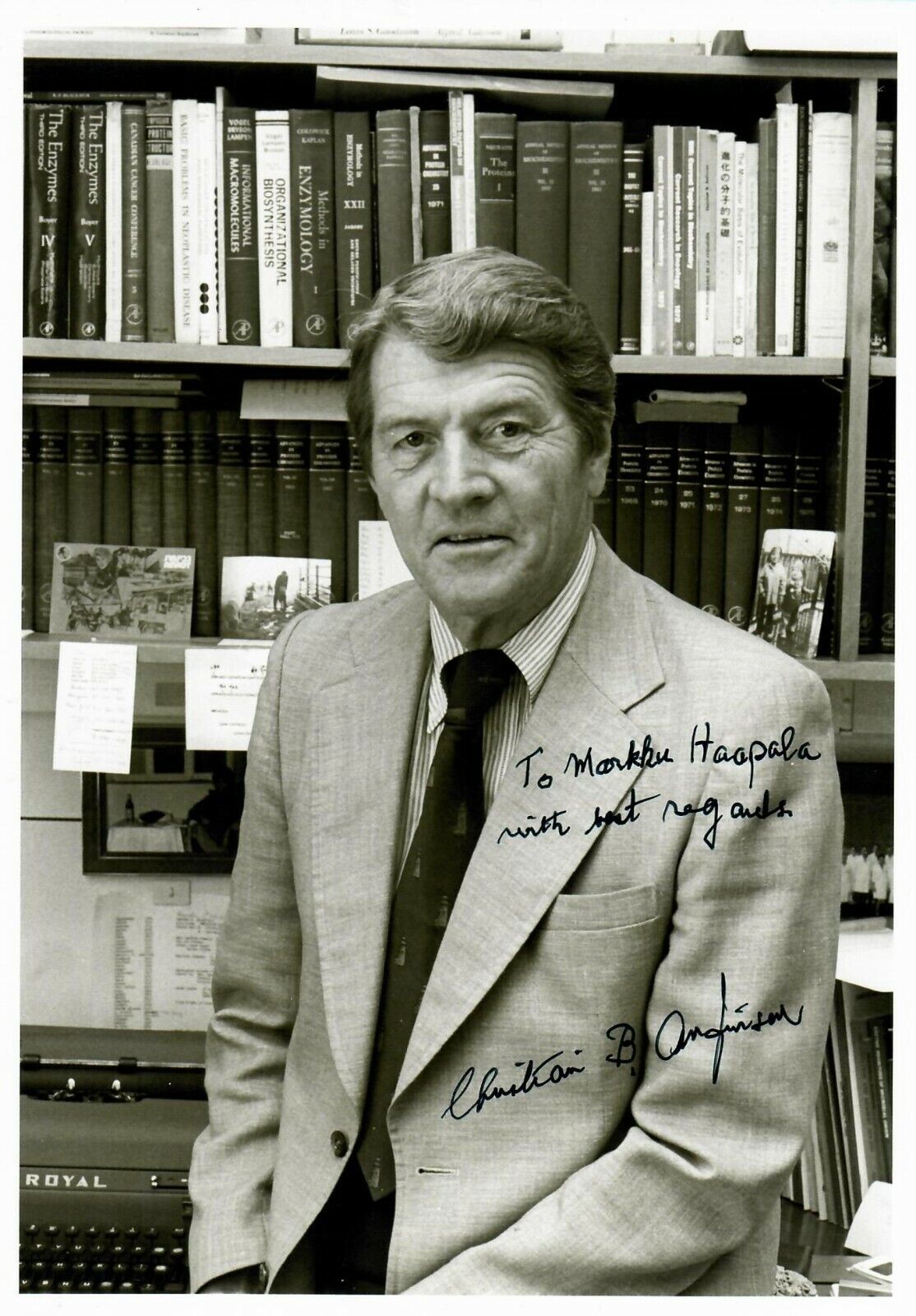-40%
"Nobel Prize in Chemistry" Christian Anfinsen Signed 8X10 B&W Photo JG Autograph
$ 105.59
- Description
- Size Guide
Description
Up for auction the"Nobel Prize in Chemistry" Christian Anfinsen Hand Signed 8X10 B&W Photo.
This item is certified authentic by
JG Autographs
and comes with their Letter of Authenticity.
ES-6537
Christian Boehmer Anfinsen Jr.
(March 26, 1916 – May 14, 1995) was an American
biochemist
. He shared the 1972
Nobel Prize in Chemistry
with
Stanford Moore
and
William Howard Stein
for work on
ribonuclease
, especially concerning the connection between the
amino acid
sequence
and the biologically active conformation (see
Anfinsen's dogma
).
Anfinsen was born in
Monessen, Pennsylvania
, into a family of
Norwegian American
immigrants. His parents were Sophie (née Rasmussen) and Christian Boehmer Anfinsen Sr., a mechanical engineer. The family moved to Philadelphia in the 1920s. He earned a
bachelor's degree
from
Swarthmore College
in 1937. While attending
Swarthmore College
he played varsity football and joined the
Delta Upsilon
fraternity. In 1939, he earned a
master's degree
in organic chemistry from the
University of Pennsylvania
. In 1939,
The American-Scandinavian Foundation
awarded Anfinsen a fellowship to develop new methods for analyzing the chemical structure of complex proteins, namely
enzymes
, at the
Carlsberg Laboratory
in
Copenhagen, Denmark
. In 1941, Anfinsen was offered a university fellowship for doctoral study in the Department of Biological Chemistry at
Harvard Medical School
. There, Anfinsen received his
Ph.D.
in biochemistry in 1943. In 1979, he
converted
to Judaism, by undergoing an Orthodox conversion and that same year he quit smoking. Although Anfinsen wrote in 1985 that his feelings on religion still reflect a fifty-year period of orthodox
agnosticism
.
Anfinsen had three children with his first wife, Florence Kenenger, to whom he was married from 1941 to 1978. He married Libby Shulman Ely, with whom he had 4 stepchildren, in 1979.
His papers were donated to the National Library of Medicine by Libby Anfinsen between 1998 and 1999.
In 1950, the
National Heart Institute
, part of the
National Institutes of Health
in
Bethesda, Maryland
, recruited Anfinsen as chief of its laboratory of
cell physiology
. In 1954, a
Rockefeller Foundation
fellowship enabled Anfinsen to return to the Carlsberg Laboratory for a year and a
Guggenheim Foundation
fellowship allowed him to study at the
Weizmann Institute of Science
in
Rehovot, Israel
from 1958 to 1959.
[8]
He was elected a Fellow of the
American Academy of Arts and Sciences
in 1958.
In 1962, Anfinsen returned to Harvard Medical School as a visiting professor and was invited to become chair of the department of chemistry. He was subsequently appointed chief of the laboratory of chemical biology at the National Institute of Arthritis and Metabolic Diseases (now the National Institute of Arthritis, Diabetes, and Digestive and Kidney Diseases), where he remained until 1981. In 1981, Anfinsen became a founding member of the
World Cultural Council
.
[10]
From 1982 until his death in 1995, Anfinsen was professor of biophysical chemistry at
Johns Hopkins
.
Anfinsen published more than 200 original articles, mostly in the area of the relationships between structure and function in proteins. He was also a pioneer of ideas in the area of nucleic acid compaction. In 1961, he showed that
ribonuclease
could be refolded after denaturation while preserving enzyme activity, thereby suggesting that all the information required by protein to adopt its final conformation is encoded in its
amino-acid sequence
. He belonged to the
National Academy of Sciences
(USA), the
Royal Danish Academy of Sciences and Letters
and the
American Philosophical Society
.










